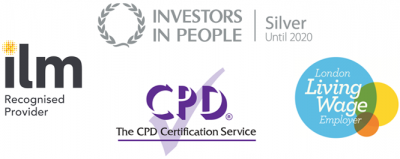Aug
25
2016
Four steps to nailing presentation nerves
By Fiona Lewis.
Whether it’s a sales pitch, a conference key note or a staff briefing, public speaking can terrify the best of us. In fact, research has found that more people are afraid of public speaking than dying. There are very good evolutionary reasons for this! Back in the midst of pre-history, social rejection by your community probably meant starving or being mauled by predators. No wonder then that the fight or flight response kicks in for your moment in the spotlight – sweaty palms, struggling to get your words out, forgetting your train of thought – none of these do much for your confidence or delivery.
So how can you overcome nerves to perform at your best? Here is a four step process for handling presentation nerves – PAPA says relax!
P – Prepare
You will feel more confident if you are well-prepared and have left nothing to chance. Practice your presentation out loud and ask a colleague/friend/family member for feedback. Think through how you can best use notes to keep you on track – don’t let them become a distraction. Anticipate possible questions and how you will deal with them.
Think through the logistics of the day. How will you travel to the presentation? What will you wear – have you tried your outfit on and checked it is still in good condition? Have you double checked the IT arrangements? Take your presentation slides on a memory stick as well as emailing in advance and have a plan B in case all IT fails.
A – Accept
Accept it is perfectly normal to feel nervous – ironically trying to mentally “run” from feelings of panic can make you even more flustered, while calmly observing your nervous symptoms tends to make them flee! It can help to remember that most of your audience would feel nervous when giving a presentation too and will be cheering you on to succeed.
People rarely look as nervous as they feel – many people who attend our presentation skills courses are shocked at how relaxed they look when we film them, despite their inner turmoil. In fact the rush of adrenaline they experience usually enhances their presentation.
P – Physical
Exert control over your physical body and stop nerves in their tracks! The fight or flight response can be a vicious cycle – the rapid breathing and adrenaline rush of nerves can trigger your body to release more and more adrenaline unless you get yourself into a calmer state. Paying attention to your posture, stance, facial expressions and body language will make you feel more confident and reduce your panic response. Smile, stand tall, own the stage or try the Wonder Woman pose (hands on hips) just before you speak – research shows it has a marked effect on your testosterone levels!
Most important of all is slowing your breathing down – breathe slowly and from the diaphragm not chest. Trying breathing in and out for a count of 6 or longer. But be wary of taking deep breaths without equally long exhales - too much oxygen may have the same effect as the rapid breathing of the panic response.
A – Acknowledge
Don’t be embarrassed about nerves: it shows you care and you are passionate about your subject matter. Reframe your nerves in a positive way: I’m not nervous, I’m excited! Try telling your audience that you are feeling really fired up because you feel so strongly about what you are going to tell them about. Confiding in them in this way will help to get them on side and make you feel more in control.
Conquer your fears for good and learn how to present with confidence on our one-day training course.
Consultant, trainer and coach Fiona Lewis helps people and organisations to fulfil their potential and raise their profile for greater success. She has over 16 years’ experience in communications and PR gained in-house and as a consultant in the not-for-profit and private sectors.


